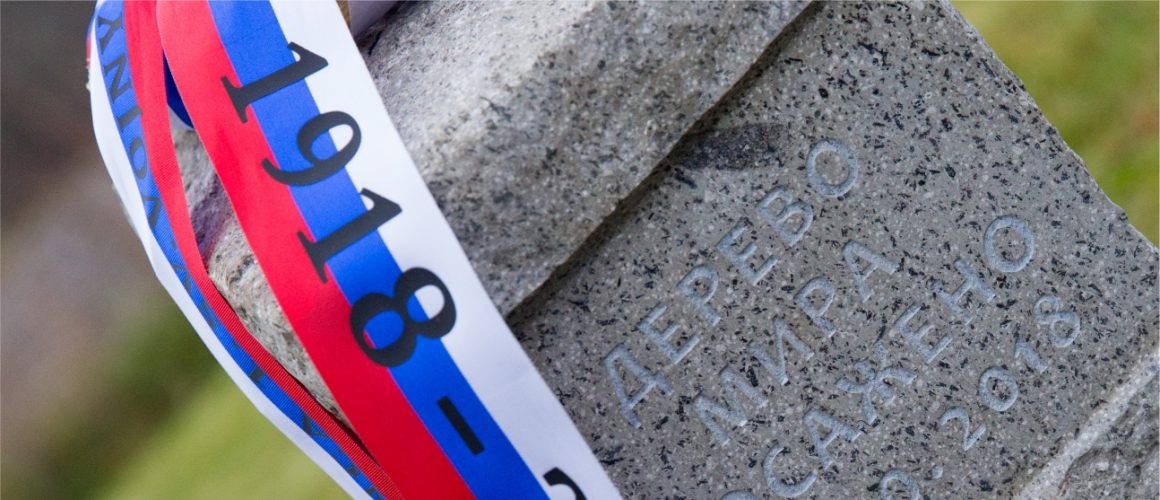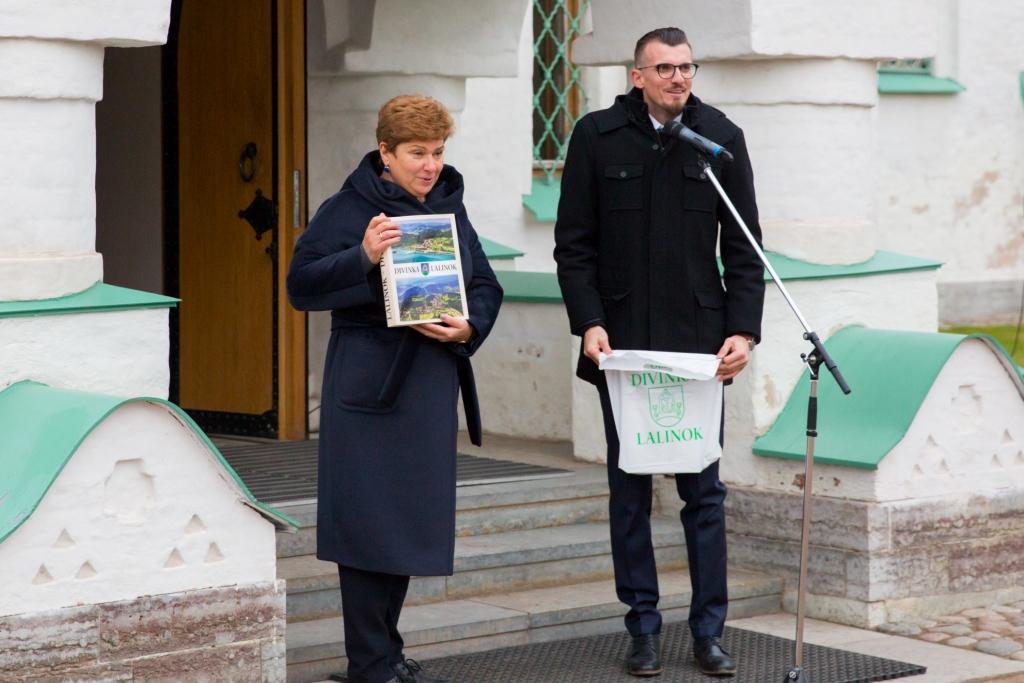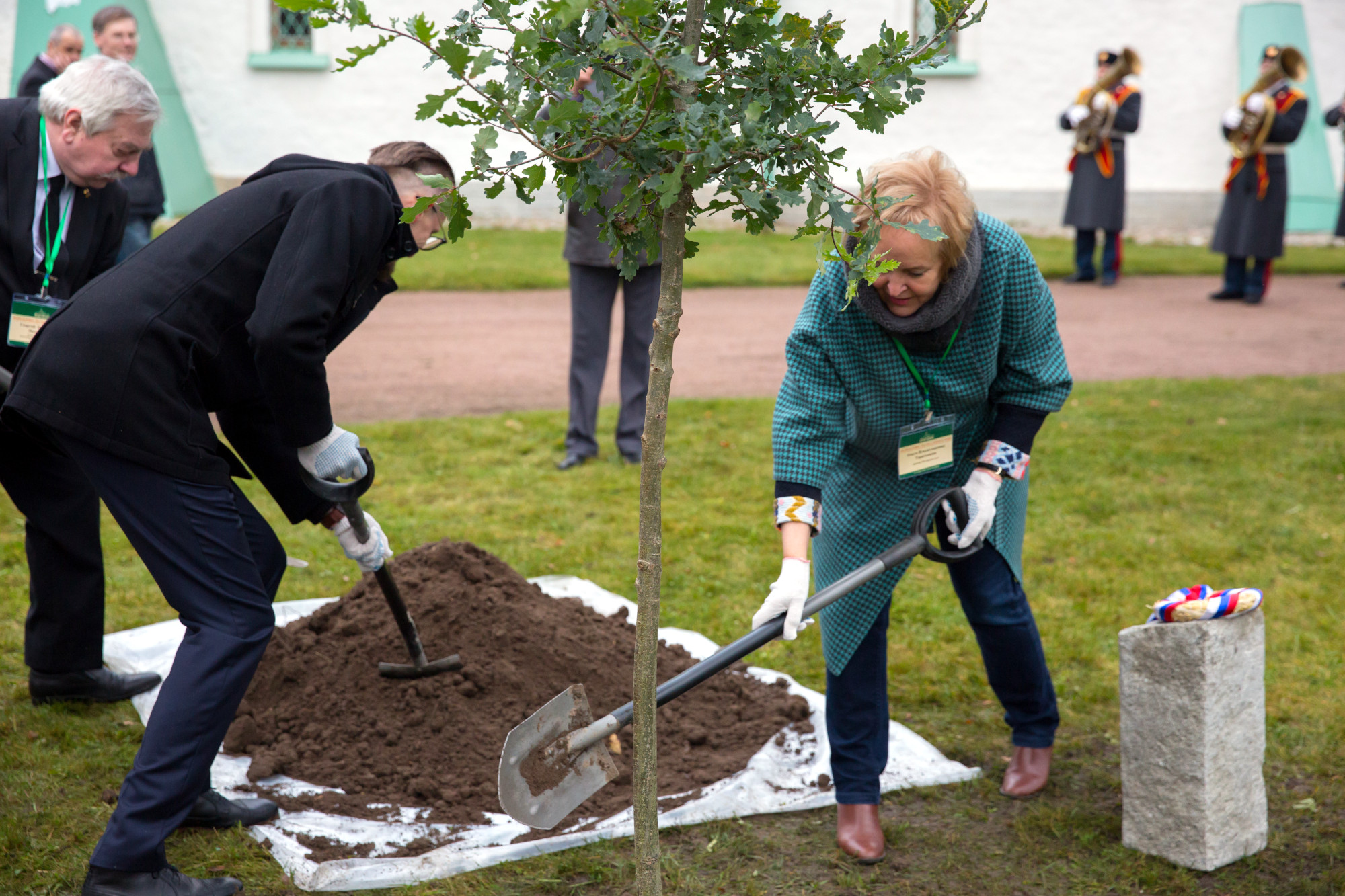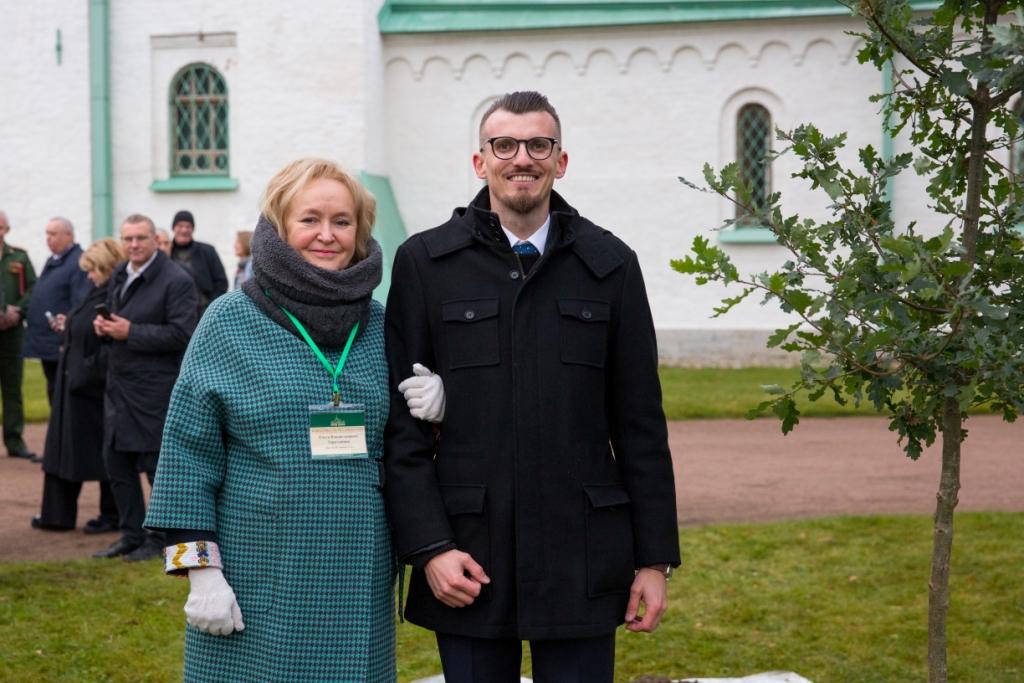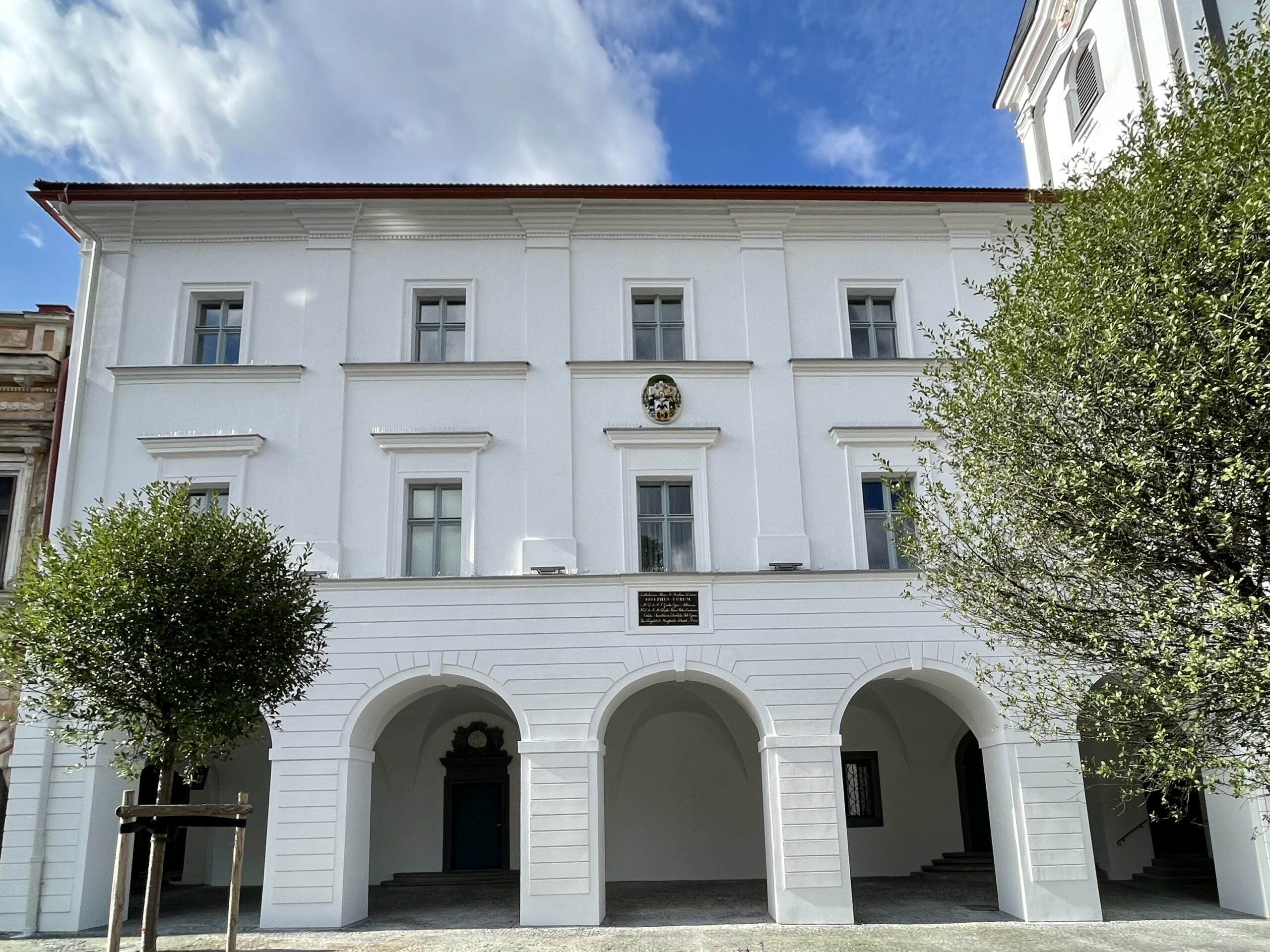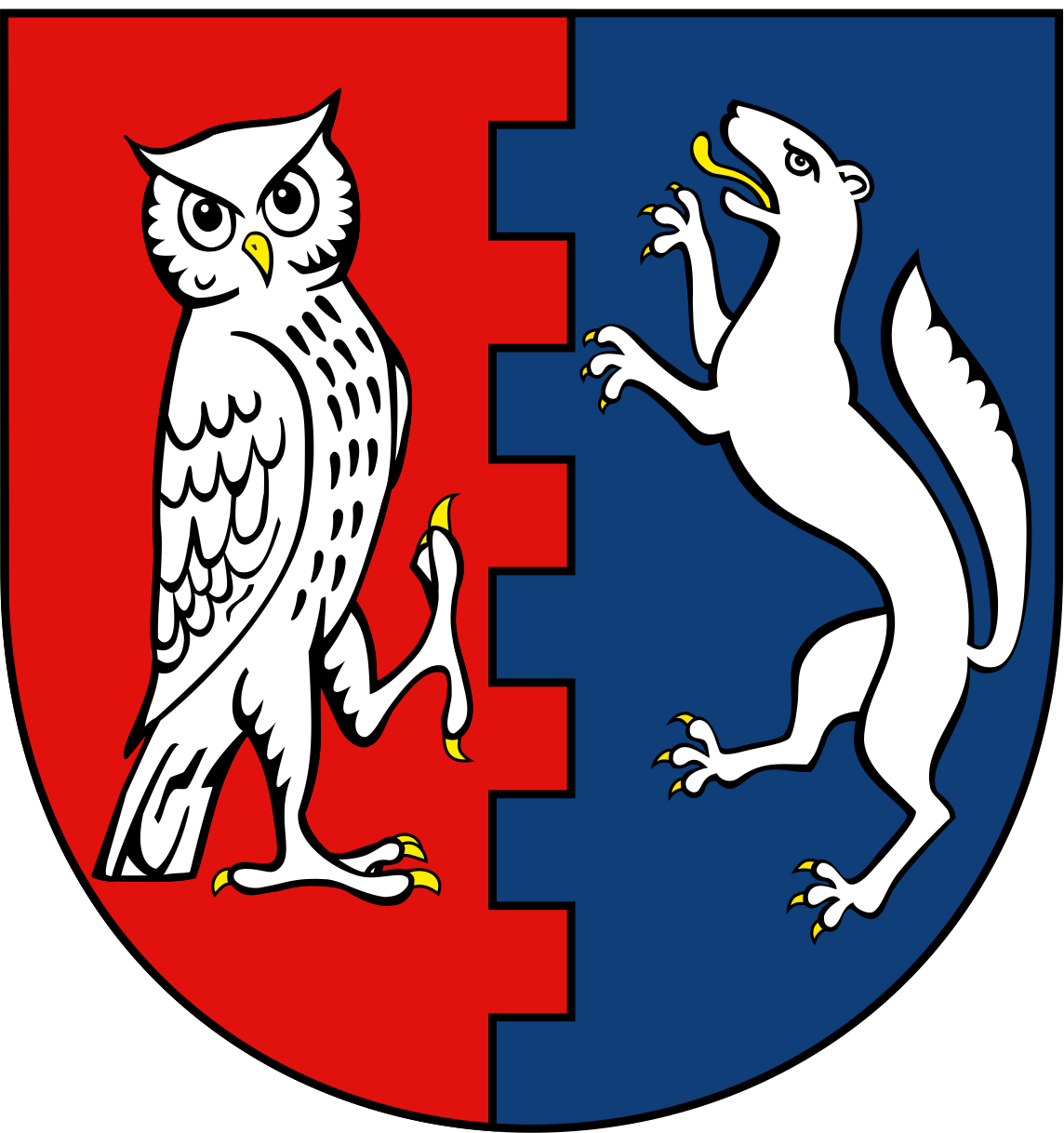Important note about the Russian invasion of Ukraine, February 24, 2022:
Although we are a strictly apolitical initiative, we must categorically condemn the evils and injustices of war, because ordinary people suffer the most in every war. We condemn gross violations of international law and the principles of the UN Charter. There is no rational justification for this war. Today, we are witnessing what a fragile commodity peace and friendship are. We believe that there are still people in Russia who want true peace without lies and political propaganda. We wish all these Russians good luck and keep their fingers crossed!
Pushkin, Saint Petersburg, October 26, 2018. A common oak sapling (Quercus robur) was planted near the entrance to the museum Russia in the Great War at the Martial Chamber on October 26 as part of the project Tree of Peace commemorating the 100th anniversary of the end of World War I. The planting ceremony of the 400-year lifespan tree opened the international research and practice conference The Results and Lessons of the Great War 1914 – 1918, which is held in the Martial Chamber. The ceremony was led by Mr. Marek Sobola, Tree of Peace project’s instigator and by Director Olga V. Taratynova of Tsarskoye Selo.
Landscape architect, Marek Sobola initiated Tree of Peace to commemorate the 100th anniversary of the end of the Great War conflict in autumn 2018. The war had an impact on his family. It touched his grandfather Joseph, who never saw his father Ondrej because the latter was lost on a Russian battlefield during World War I. Born on August 7, 1880 in the village of Lalinok near Žilina, Slovakia (then under the Austrian-Hungarian monarchy), Ondrej Sobola was enlisted in the 15th Military Infantry Regiment and then went missing circa 1915 after a battle in Russia. In Czechoslovakia he was pronounced dead in 1930, although his official date of death was given as December 31, 1918. Marek’s six-year research in many archives across Europe, from Denmark to Switzerland to Russia, has failed to bring any result and he still does not know where his great-grandfather was buried.
Sobola says: “The story of my family inspired me to the idea of this project. Stories like mine were repeated millions of times during World War I. Today, for my great–grandfather, as well as for all the other soldiers buried in unknown places without a name or identity, I can at least accomplish this one symbolic act.” Besides Tsarskoye Selo, so far a Tree of Peace has been planted in Slovakia, in the largest WWI cemetery in Slovakia in the village of Veľkrop where 8,662 soldiers of the Austro-Hungarian and Russian armies are buried. The next confirmed locations will include the imperial villa Bad Ischl in Austria; the Bôrik Military Cemetery in Žilina, Divina village (Marek’s birthplace) and Lalinok village (birthplace of his ancestors) in Slovakia; Jangrot village (Gmina Trzyciąż) in Poland; and possibly a place in Turkey. The project aims at planting the Trees of Peace on every continent within four years — such was the length of the global war conflict.
